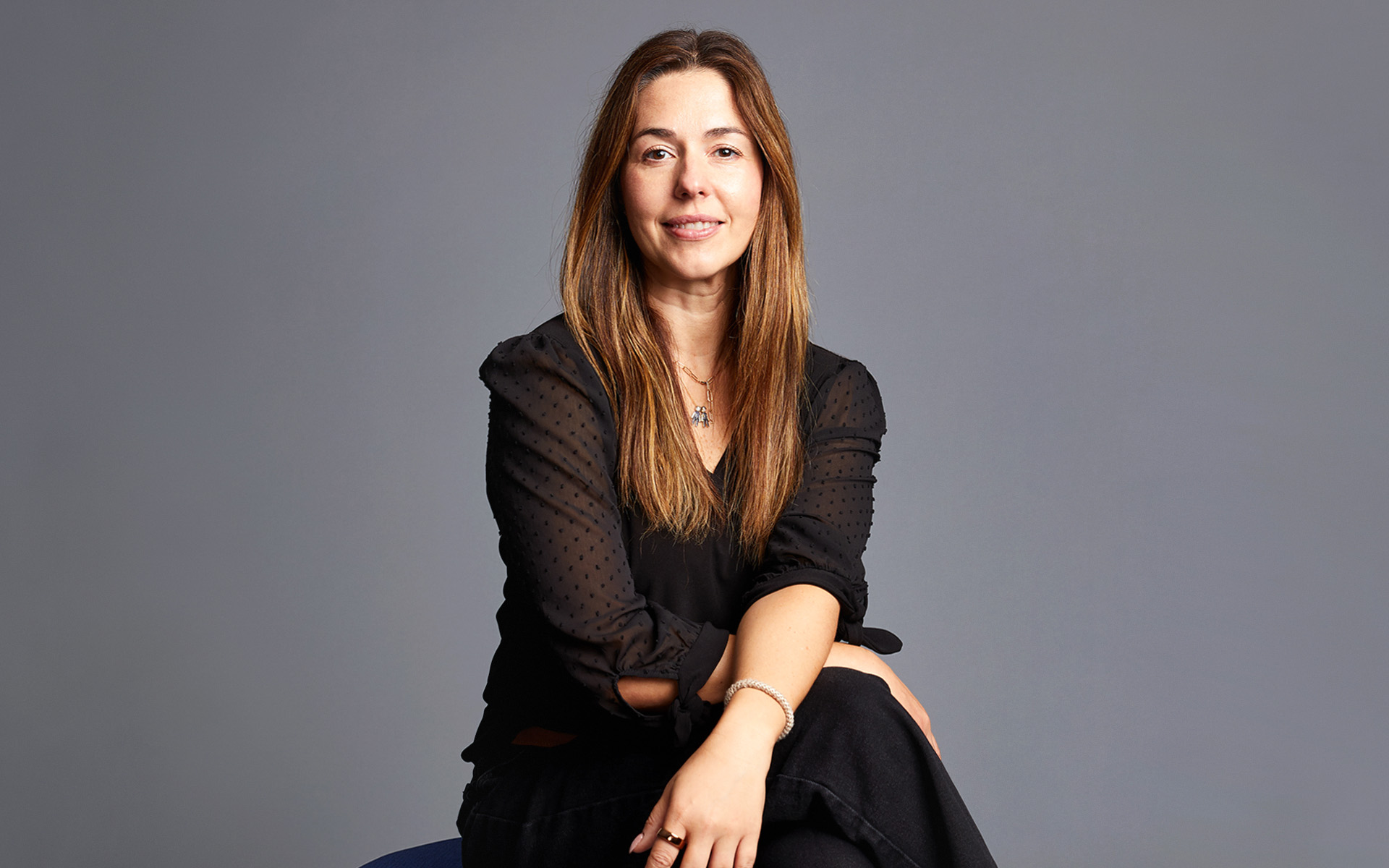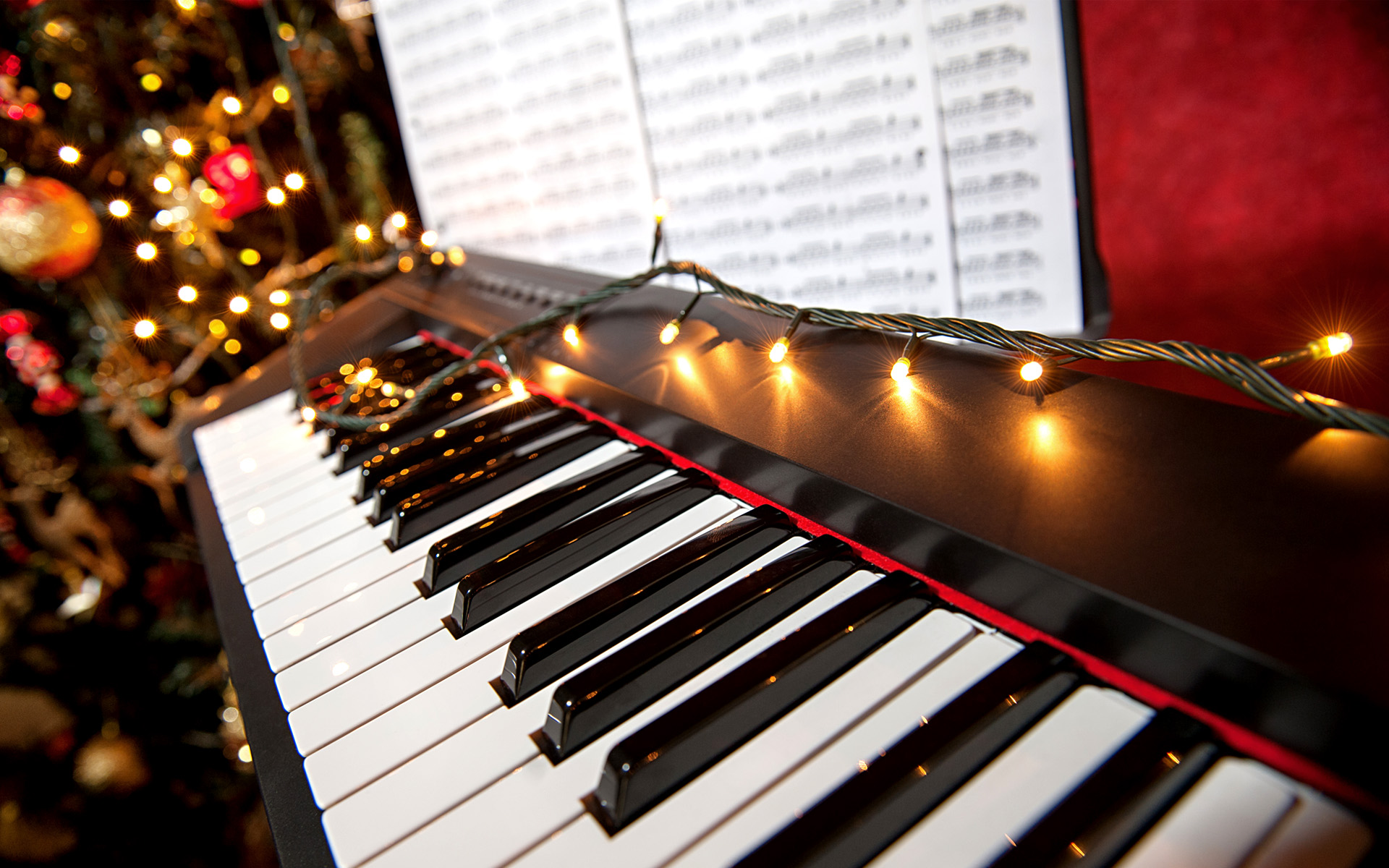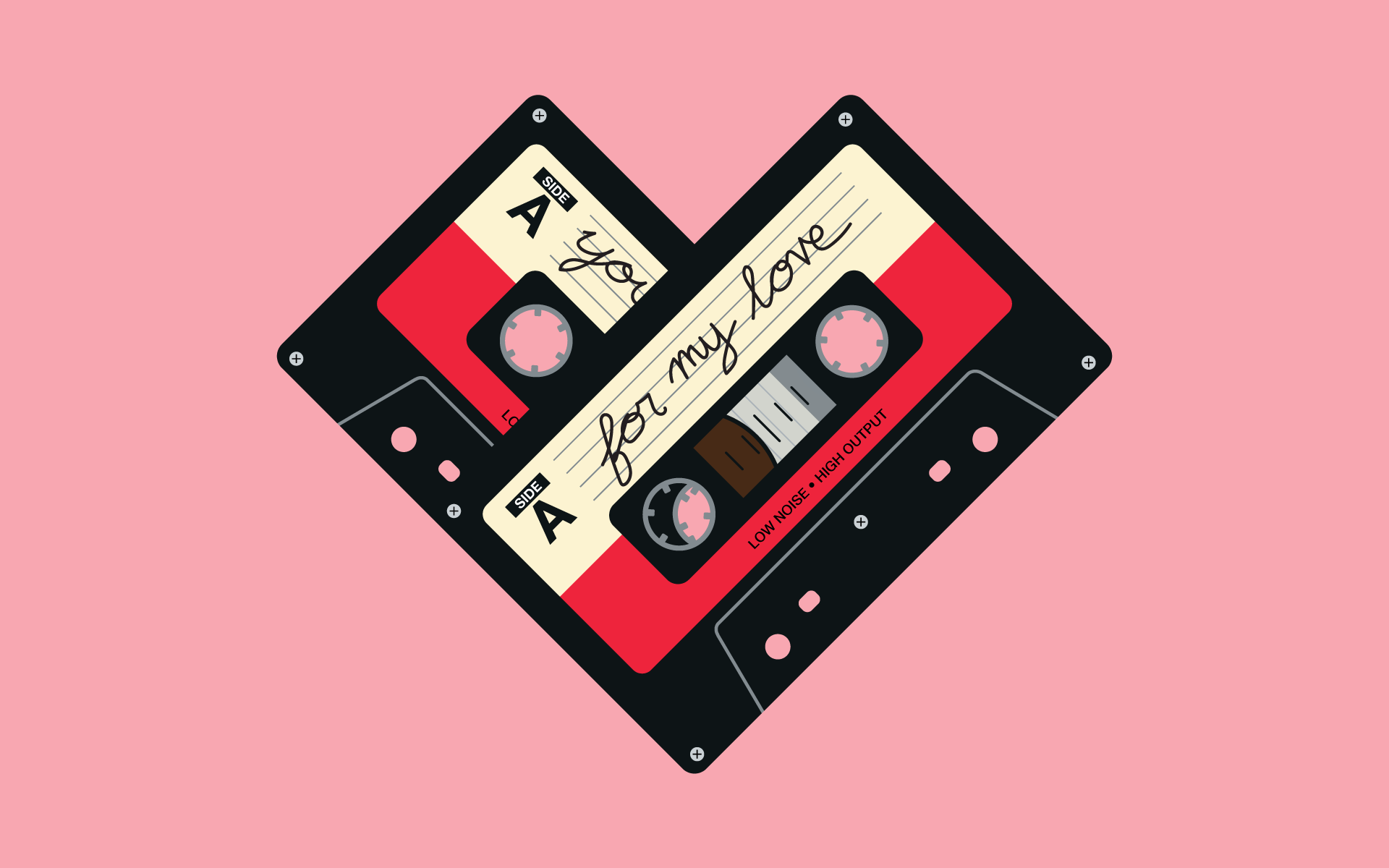The following information on how to write for an orchestra is excerpted from the Berklee Online courses Orchestration 1 and Orchestration 2, both written by Ben Newhouse, and currently enrolling.
Orchestral music comes in a wide variety of genres and harmonic languages. My goal in teaching about orchestration is to provide you with frameworks to guide your thinking, regardless of genre and harmonic content. Here, we’ll break orchestration down into its basics so you can get a feel for what the process and profession are like.
What is Orchestration?
While the term can have multiple meanings, in the context of music, orchestration is the act of writing music for an orchestra. It involves assigning which instruments play which parts in a musical piece.
What Does an Orchestrator Do?
An orchestrator takes a composer’s musical sketch and turns it into a score for orchestra, ensemble, or choral group, assigning the instruments and voices according to the composer’s intentions. Depending on the project, the composer could also be the orchestrator.
People outside the music industry often confuse orchestrators with arrangers, and for good reason: each picks up a piece of music where the composer left off. The key difference is the arranger’s job is to reinvent an existing piece of music, whereas the orchestrator’s job is to develop, enhance, or complete it while adhering as closely as possible to the composer’s creative vision. Depending on how much information the composer passes along, this could mean anything from assigning instrumentation and dynamics to writing entirely new chords and harmonies.
LEARN MORE ABOUT BEGINNING A CAREER AS AN ORCHESTRATOR
Why Should You Learn Orchestration?
The orchestra is a powerful emotional tool and orchestration will be a significant addition to your writing arsenal.
First, if you want to write music for film, TV, and games, or for the concert and stage, orchestration is a huge aspect of that job, whether you’re doing it yourself or working with an orchestrator.
Second, the ability to write for an orchestra brings substantial credibility in the musical world. In the words of one notable Hollywood agent, “It is assumed that, if you can write for orchestra, you can write for anything.”
Last, a successful career as an orchestral composer can bring significant financial rewards. Rather obviously, the top film composers in Hollywood enjoy an enviable financial situation. While great orchestration chops do not guarantee that kind of success, weak orchestration chops certainly diminish its likelihood.
How Do You Start Orchestrating?
This goes without saying, but before you begin orchestrating, you must be proficient in music theory, harmony, and ear training. Having experience performing in an orchestra with a particular instrument, and having familiarity with several different instruments you find in an orchestra, puts you in a good position to begin orchestrating. If you could use a boost in your music theory study, Berklee Online has plenty of courses that will get you up to speed.
A central task in orchestration is choosing the best tone color for a given musical idea. When making instrumental selections, base your decisions on the tone color of the instruments rather than their range. In other words, “I will group the trumpets with the trombones together because they both have a bright, brassy color,” is actually a better thought process than, “I will group the violins with the piccolo because they both are high-pitched instruments.”
STUDY MUSIC THEORY, HARMONY, AND EAR TRAINING AT BERKLEE ONLINE
Notably, the structure of the musical idea itself—the harmony, melody, and rhythm—will have a big impact on the color and emotional content of the music. Often, these factors will guide, if not dictate, your orchestration choices. Ideally, all of these factors—harmony, melody, rhythm, and orchestration—work in concert to deliver a unified musical statement.
Example: Mahler’s Symphony No. 3
The following example is a passage from Movement No. 1 of Mahler’s Symphony No. 3, which will provide some context as to how color and emotional content can drive musical structure. The passage uses a slow, brooding rhythm, and ominous harmonies (triads and open 5ths in an unusual progression of chords neighboring A).
STUDY ORCHESTRATION WITH BEN NEWHOUSE
You can listen below to the basic musical idea, performed on piano, and/or follow along with the notation, though in this context the sheet music is just to serve as a reference or guide, rather than something you need to be concerned with playing right now.


Mahler’s task is to maximize the ominous tone of the music with orchestration choices. He chose to use low register horns and bassoons (including contrabassoon) for the primary musical statement, supplemented by a bass drum roll and occasional tam-tam and timpani strikes.
The beginning of the phrase, a stronger forte statement is performed by low register tuba and trombones. All of the choices here for the orchestra could be described as dark, ominous, and brooding, which matches the harmonic and melodic content of the music.
Bassoons are commonly used to supplement brass parts, particularly in a harmonic context. The tone color of the bassoons blends particularly well with the brass, with the listener perceiving a predominantly brass color. As a result, the bassoons can be used to reinforce key pitches without drastically altering the brass’ tone color. In this case, the bassoons are used to strengthen the bass line.
Listen now to the orchestrated version below. Again, you can also follow along with the notation, but the sheet music is just to serve as a reference or guide, rather than something you need to be concerned with playing right now.
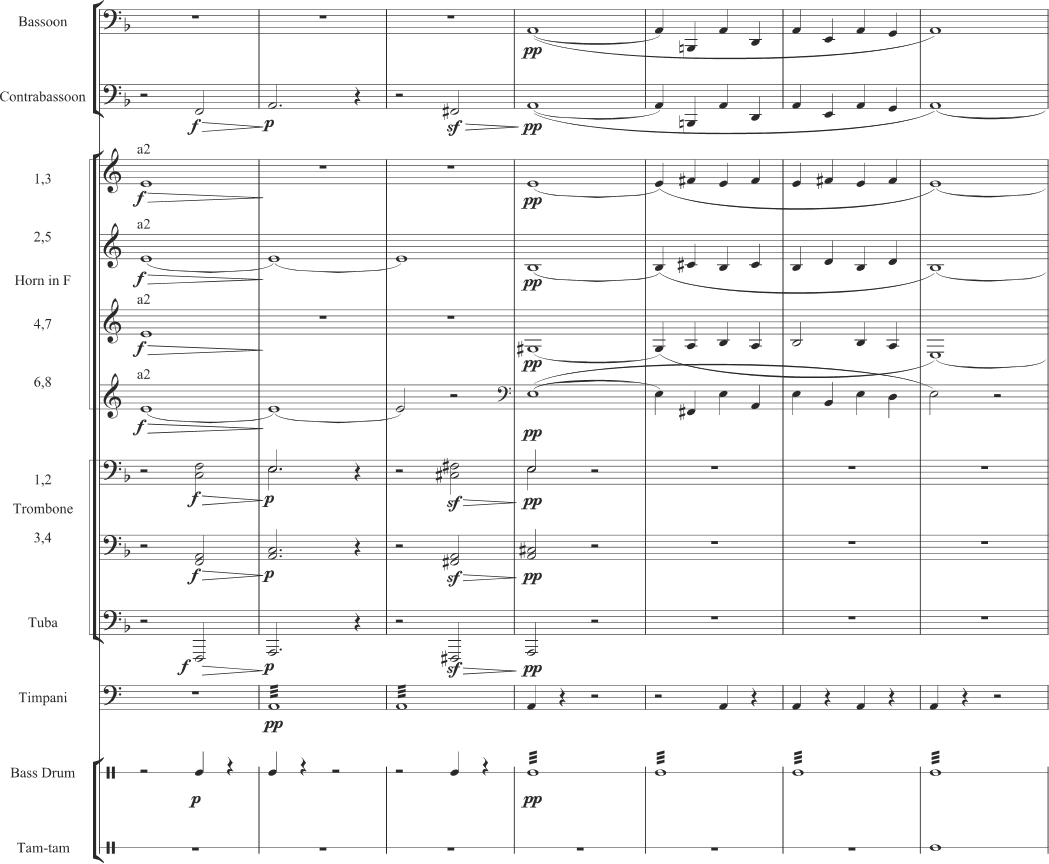
Ravel’s Daphnis et Chloe (Lever du Jour)
The next example is a passage from “Lever du Jour” from Ravel’s Daphnis et Chloe. The passage uses dreamy and ethereal harmonies in an arpeggiated motion. The basic musical idea arranged for piano, is:




Ravel’s task is to maximize the dreamy nature of the music with orchestration choices. Ravel chose flute, clarinet, harp, and celesta to perform the arpeggiated figure.
The harmonies are reinforced by muted strings, muted horns, and string harmonics. The bass line is performed by cello and double bass in octaves. All of the choices could be described as ethereal, wistful, and dreamy—matching the harmonic and melodic content of the music.
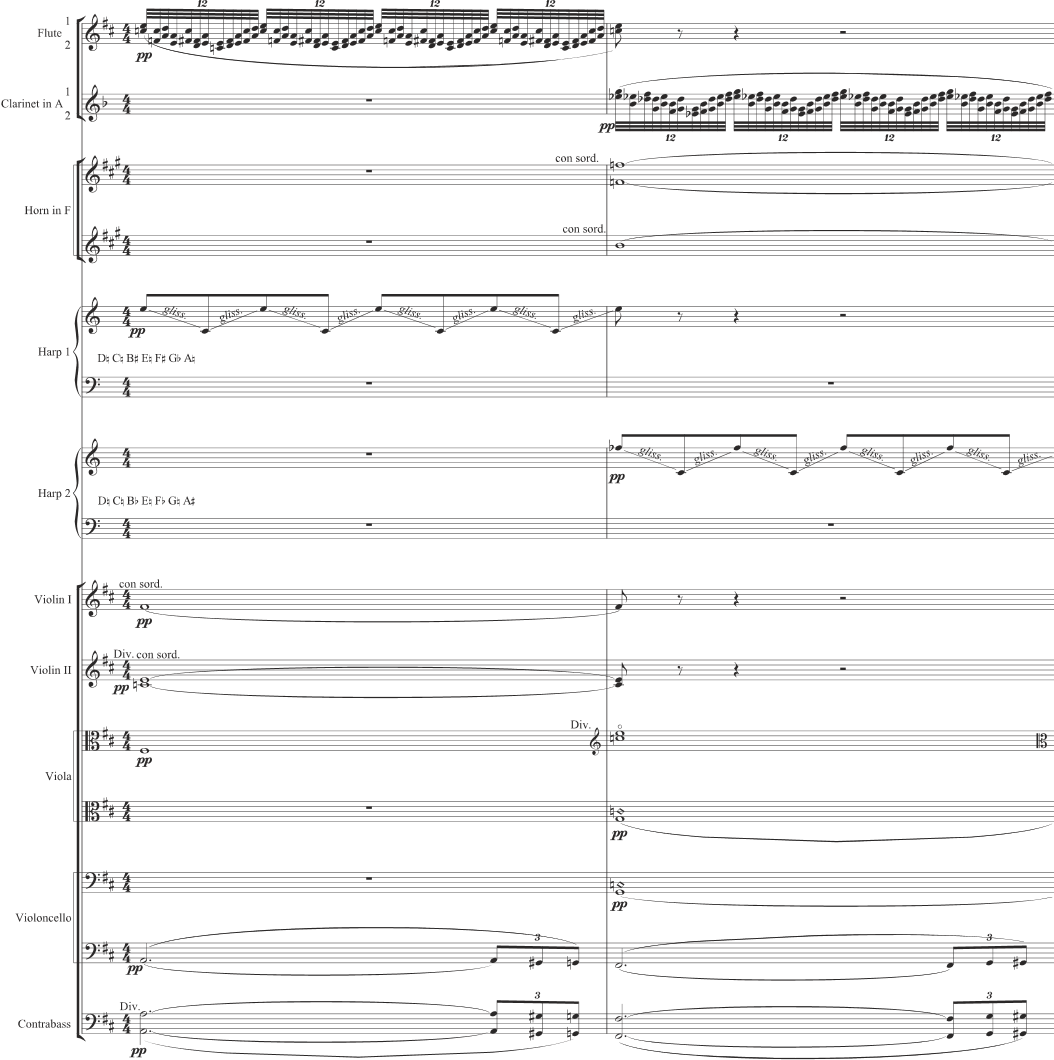
Ravel used two harps to avoid difficult pedal changes. In addition, the woodwinds are given rests, allowing time to rest and breathe. While these choices are primarily practical, the woodwind alternation also creates a gradual evolution in tone color.
Questions to Ask Yourself
Choices of color are quite subjective and often don’t have “right” answers. The questions to ask yourself are:
- What emotion do I wish to elicit?
- What tone color is required given the emotional objectives?
- What instruments and instrumental combinations best elicit that color?
- What ranges and playing techniques on those instruments best elicit that color?
You should make efforts to make such choices systematically. Keep a full list of orchestral instruments and playing techniques on hand. As you are writing, scan through the list, looking for instruments that will achieve the effect you desire.
If You Don’t Have an Orchestra, How Can You Orchestrate?
As you can imagine, it is very expensive to hire a full orchestra, and more often than not, modern orchestrators are working electronically. That is one of the reasons why orchestration is such a complex discipline, is because it requires expertise in both musical structure and technological equipment. If you need to learn more about music production and music notation before starting to orchestrate, there are plenty of Berklee Online courses to help you.
LEARN MUSIC PRODUCTION AT BERKLEE ONLINE
Here is some of the technology you will need when you are starting out:
Sample Libraries
A sample is nothing more than an audio file. A sample can be any type of audio—a four-bar drum loop, a single note played on a clarinet, 30 seconds of orchestral music, and so on. In the case of MIDI orchestration, samples are most commonly single notes on a given instrument, such as middle C on a clarinet, middle C on a trombone, etc.
A sampling library is a commercially released collection of samples. The samples are organized into presets appropriate for the underlying samples. For instance, multiple samples of staccato violins will be organized to allow you to play staccato articulations across the full range of the violin.
Examples of sampling libraries include East West Symphonic Orchestra and Vienna Symphonic Library.
Sampler Hardware and Software
Samplers are hardware or software devices that allow you to trigger samples from a musical keyboard. For instance, you can load a clarinet sample (or a set of clarinet samples) into a sampler. When you subsequently play middle C on your keyboard, a message is sent from the keyboard to the sampler indicating that you just played middle C. The sampler receives this message, retrieves the middle C clarinet sample (audio file), and outputs the corresponding audio.
Examples of hardware samplers include the Korg Volca Sample 2, the Polyend Tracker, and the PO-33 K.O! from Teenage Engineering, as well as classics like the EMU Emulator EIV, Roland S760, and Akai Z4. Software sampling programs include Kontakt and MachFive.
Today, most sampling libraries come with their own software sampler interface.
MIDI (Musical Instrument Digital Interface)
The message sent from the keyboard to the sampler is a MIDI message. MIDI (Musical Instrument Digital Interface) messages are digitized information that describe a musical performance. MIDI data includes information on which notes you played, how hard you played them, how long you held them, etc. Most commonly, MIDI data is initially produced on a musical keyboard.
Sequencers are hardware or software devices that allow you to record, edit, and replay MIDI messages. Hardware sequencers are typically keyboards or drum machines that include sequencing capabilities.
Creating dynamics is one of the most important tasks in MIDI sequencing. This is particularly true when trying to create a realistic sequence of orchestral music. Orchestral performers swell in and out nearly continuously, and you should mimic this in your sequences. In this topic, we will discuss the technical aspects of creating dynamics in your sequence.
The tone color of orchestral instruments changes significantly throughout the dynamic range, meaning a forte (loud or strong) performance is more than just louder than a piano (soft) performance. The tone color itself also changes, typically becoming brighter and more intense. As you approach dynamics, remember to address both of these issues—the loudness of the sound and the tone color of the sound.
Unfortunately, such musicality does not come easily with MIDI sequencing. The majority of samples are sustained sounds with level dynamics. A beginning sequence is merely a succession of these samples—with identical attacks, level sustains, and identical releases. Even when the sample includes inherent dynamics—such as a diminuendo sample—each attack and decay remains identical.
As a seasoned MIDI orchestrator, you must overcome these tendencies and mimic the expressive nature of orchestral instruments to create realistic performances.
6 Orchestration Tips
Now that you know a bit more about orchestration, I’m going to leave you with six tips from Berklee Online’s YouTube channel:
1. Move Material Around the Orchestra
One of the greatest strengths of an orchestra is the variety and sheer number of instruments. An instrument like the violin can be used in several different ways: a solo with one player, or a violin section with a dozen players. This means we can move the melody around. The melody can start from the oboe, then go to flute, then cello, etc. This creates variation in the tone color of the music, which makes it more interesting and gives it forward momentum and direction.
2. Vary the Overall Instrumentation
Another strength of the orchestra is its dynamic variability. We can have an 80-piece orchestra and they can all play at once which would be a loud, large statement. By contrast, we could have just one musician playing, and then we’d have a very soft dynamic. It can be very loud or it can be very soft. As composers and orchestrators, we want to utilize that to add interest.
3. Study Scores
Over the past few centuries, great composers like Brahms and Tchaikovsky, have written brilliant music for orchestra, and we can learn a lot by looking at their scores and listening to the recordings. Most of their scores are public domain at this point, so you can go online, download the PDFs, and listen to the recordings while you’re looking at the scores. Studying scores is a great way to learn about writing for orchestra.
4. Create Multiple Orchestrations for a Single Musical Passage
Let’s say you have a phrase with melody and harmonic accompaniment. There is more than one way to orchestrate that successfully. A great exercise is to create multiple orchestrations of a single musical idea or phrase. One possibility is to create a version that is intimate and soft with small instrumentation. Then, create another version that is as big as you can make it with large instrumentation and a full orchestra. Finally, create a third version that’s in between with medium instrumentation and medium dynamic. Creating multiple versions of a single musical idea is a great way to learn about orchestration.
5. Go to an Orchestra Concert
We can learn a lot by sitting in the same room as the ensemble, watching them play and listening to how they produce sound. We can get a sense of the relative projection of each instrument, like how loud is a trumpet is in comparison to a clarinet. It’s harder to get a sense of that when sitting in a studio and working with software. If you’re in the same room and space as the ensemble, it’s much clearer what the relative balance of the instruments in their sections are.
6. Ask Musicians about Their Instrument
Most musicians get really excited to talk about their instrument. If you want to learn something about the violin, find a violinist and ask them how it works. How does it produce sound? How do they play a harmonic? How do they play with the bow? We can learn a lot about orchestration by simply asking musicians about their instrument.
Everything we learned here takes practice, and all of these topics we will explore in greater depths in my courses, Orchestration 1 and Orchestration 2.

